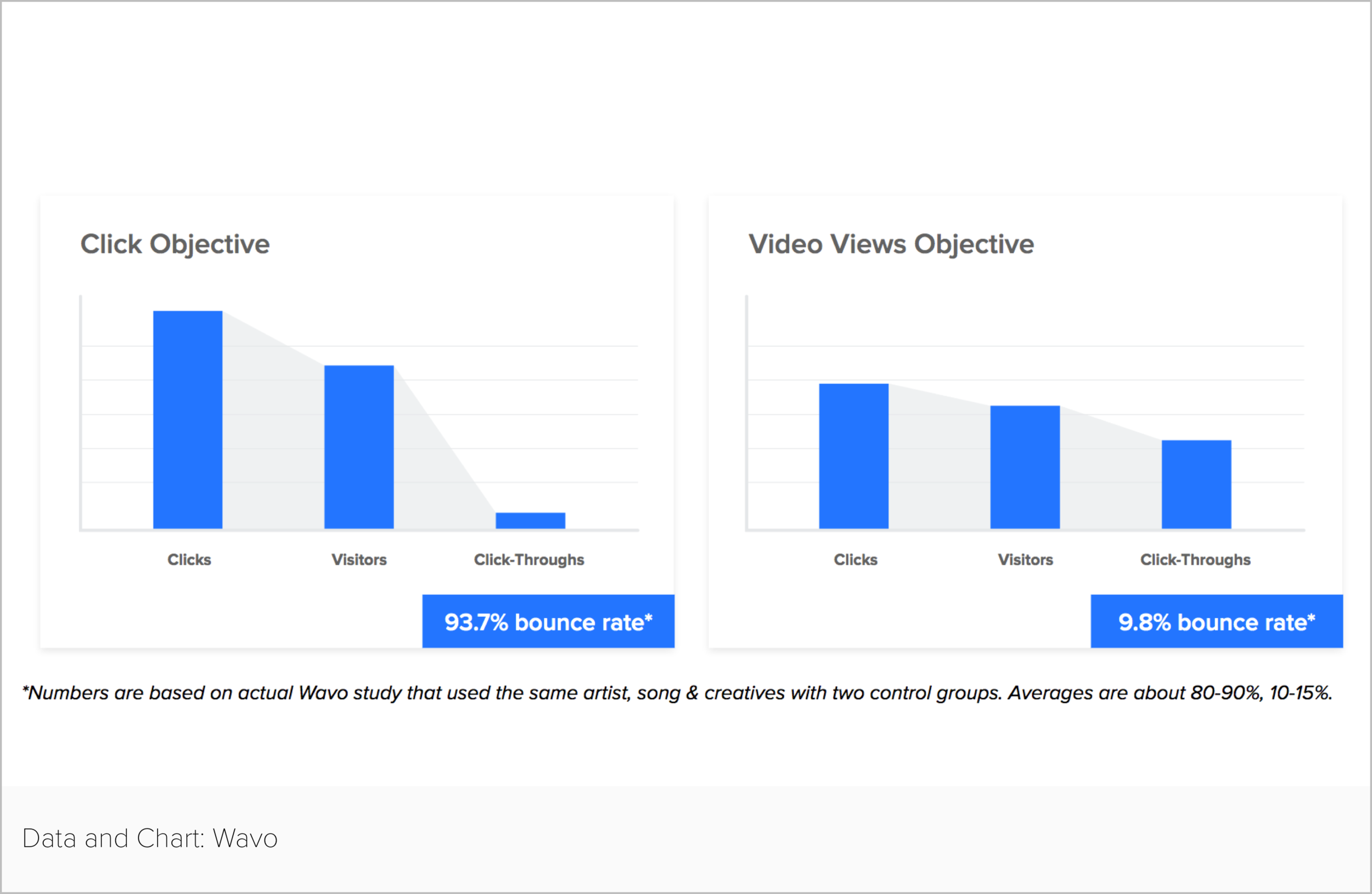How Video Views Impact Streaming Consideration and Sales Campaigns
/For many recorded music advertisers, the primary objective of campaigns is to drive artist streams. So when we set campaign goals to video views—optimizing for watch time and sound on rates instead of link clicks—we get questions from new clients.
This article looks at data from a recent Wavo study to show you how video views can not only improve consideration and get more people to streaming platforms, but also make ads more memorable, keeping artists top of mind after exposure.
How Consumers Make Decisions
Once you make consumers aware of your product online—in this case, your artist on an ad platform—the next step is to provide them with ways to learn more. Think of a brick-and-mortar store: the items are available on shelves for us to touch, inspect for damage, and size up, just as changing rooms are available for us to try on clothes.
This is the consideration stage in the customer journey. People begin to think about whether they are really interested in your product, using the information provided to arrive at a final decision. Since customers still need guidance at this stage, showcasing what makes your artist different from what they are used to is paramount. Enter video.
How Video Drives the Decision-Making Process
In the consideration stage, online advertising needs to provide consumers with the right information and experience so they can arrive at a decision on their own—otherwise, you risk attracting the wrong audience or appearing pushy.
We’ve seen the results first-hand: without engaging with an artist’s music, most consumers in click goal campaigns bounce when arriving at the pivot page—the landing page where they choose their preferred DSP. They simply aren’t motivated to keep going. Further complicating the matter is that a stream on Spotify and Apple Music only counts as such after 30 seconds of play. This is a lot to ask of someone who encountered your ad just moments ago and is not yet familiar with your artist.
Our solution? Get consumers to watch more video before clicking off. Since the experience of watching a music video is nearly identical across both paid advertising and organic posts, you don’t need to drive people to a streaming platform to answer the kinds of questions that come up during the consideration stage, like “what is this artist all about?” and “do I want to listen to this song?” You can answer them directly in your ad, with powerful imagery that encourages consumers to turn the sound on. With a video views goal, we can then focus on and pre-qualify consumers who are more likely to listen and engage further.
This method proves effective: in a Wavo advertising study of two groups served the same song and creative, those who watched more video were motivated to seek out additional information and navigate to streaming platforms. You can see the results below. Even though fewer people initially click the ad, the bounce rates for the video views campaign drop nearly 10x, and more people make it to their preferred DSP.
Furthermore, we found that certain creative decisions better engage audiences and increase watch time. For instance, if you play the hook or chorus at the start of a video ad, feature human faces, and use bright colors, viewers respond better and stick around longer.
Video Makes Ads More Memorable
Getting people to watch your video ads for as long as possible not only increases consideration within a streaming campaign. Extended watch time is also associated with higher ad recall and favourability [1] [2] [3]: “Every part of a video view—from the initial impression to a complete video view and everything in between—drives value.”
This data offers more good news for music advertisers who focus on video. Just like any other product, consumers need to know who an artist is before they go out and stream or buy their music. Video views influence this process by getting people to notice and remember ads where your artist’s music, name, and persona are the main focus.
Notes:
[1] Google
[2] eMarketer
[3] Facebook




